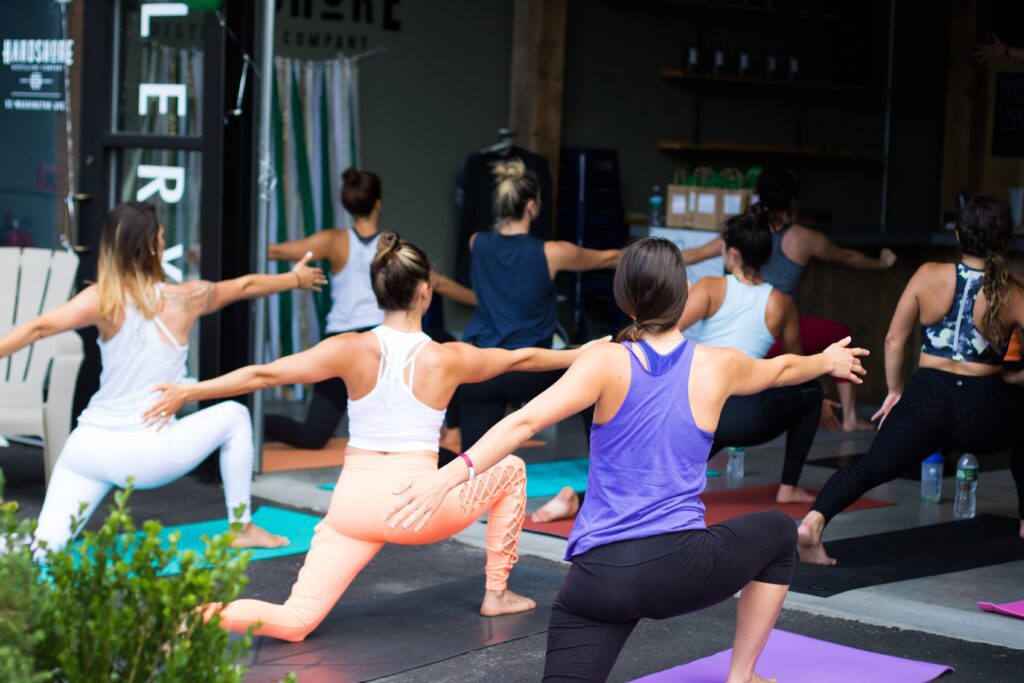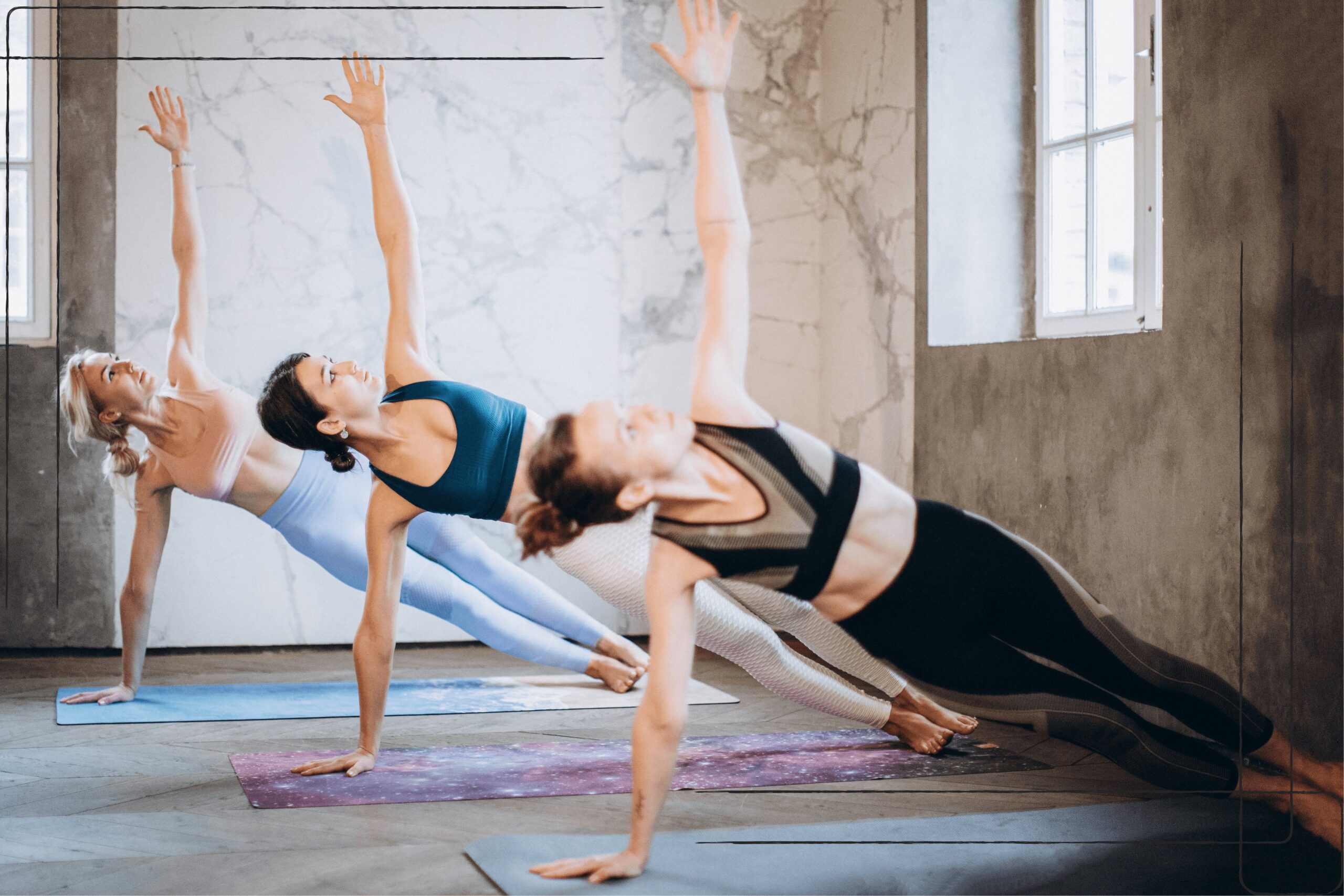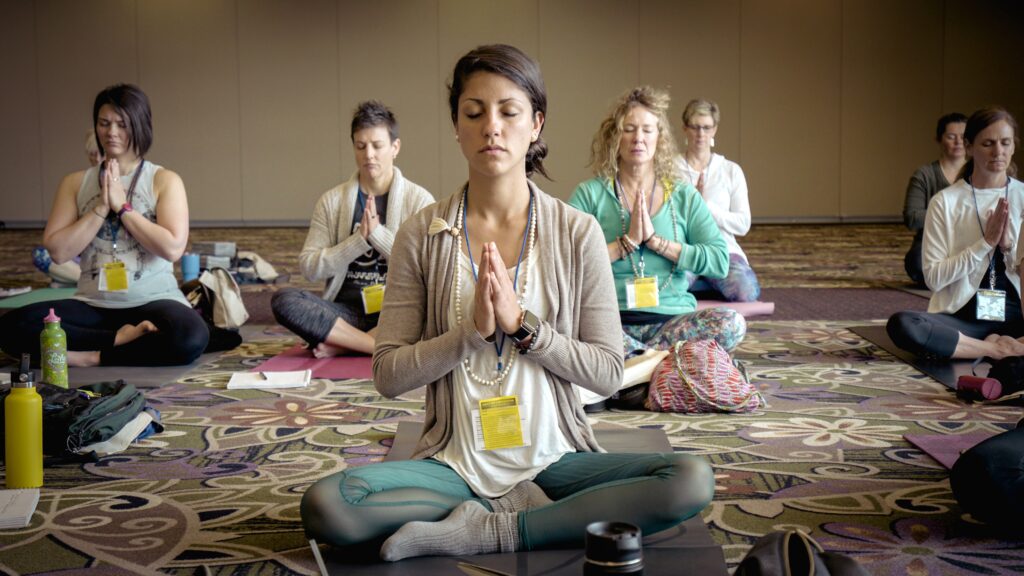Discover the incredible benefits, potential risks, and weight-loss potential of hot yoga. Find out how this dynamic practice can enhance your physical and mental well-being while helping you shed those extra pounds.
Hot yoga has acquired huge prevalence lately as an extraordinary and successful method for accomplishing actual wellness, mental lucidity, and by and large prosperity. Combining traditional yoga postures with high temperatures, this form of exercise offers numerous benefits for both the body and mind. In this article, we will investigate what hot yoga is, the means by which it supports weight reduction, the advantages and dangers related to the training, and how you can get everything rolling on your hot yoga venture. So, roll out your mat, embrace the heat, and let’s delve into the world of hot yoga!
What is Hot Yoga?
Hot yoga, otherwise called Bikram yoga, includes playing out a progression of yoga presented in a warmed room regularly set somewhere in the range of 95 and 105 degrees Fahrenheit (35-40 degrees Celsius). The training was created by Bikram Choudhury and acquired ubiquity during the 1970s. The high temperature creates a challenging environment that promotes flexibility, endurance, and mental focus.
The Link Between Hot Yoga and Weight Loss
Hot yoga is frequently connected with weight reduction because of its capacity to increment pulse, advance calorie consumption, and animate the body’s digestion. The elevated temperature intensifies the physical demands of the practice, leading to higher energy expenditure. Engaging in hot yoga sessions regularly can contribute to weight management and support overall fitness goals.

Benefits of Hot Yoga
- Increased Flexibility and Range of Motion
The intensity in hot yoga studios heats up the muscles and connective tissues, considering more prominent adaptability and further developing a scope of movement. This can enhance performance in other physical activities and reduce the risk of injuries.
- Detoxification and Cleansing
The combination of heat and rigorous physical movement in hot yoga classes promotes sweating, which aids in the removal of toxins from the body. Sweating helps cleanse the skin, eliminates impurities, and leaves practitioners with a radiant and refreshed feeling.
- Stress Relief and Mental Clarity
Hot yoga is an excellent way to release stress and tension. The focused breathing techniques combined with the challenging postures create a meditative state, calming the mind and promoting mental clarity. Ordinary practice can assist with decreasing nervousness, further developing fixation, and improving general prosperity.
- Enhanced Cardiovascular Health
The increased heart rate and intense physical exertion during hot yoga sessions provide a cardiovascular workout that strengthens the heart and improves blood circulation. Over time, this can lead to improved cardiovascular health and increased stamina.
- Improved Strength and Balance
The heat in hot yoga classes allows for deeper stretching and engagement of muscles, leading to increased strength and improved balance. As you progress in your practice, you’ll notice greater muscle tone and stability, enhancing your overall physical performance.
- Potential Risks and Precautions
While hot yoga offers various advantages, it’s essential to know about likely dangers and play it safe.
- Dehydration and Heat Exhaustion
The high temperature and profuse sweating in hot yoga can cause dehydration if fluids are not adequately replenished. It is essential to drink a lot of water previously, during, and after every meeting to keep up with legitimate hydration levels. Indications of intensity weariness, like wooziness, sickness, or weakness, ought not to be disregarded, and breaks ought to be taken when required.

- Overexertion and Muscle Strains
The heat in hot yoga can make practitioners feel more flexible than usual, which may lead to overexertion or improper alignment in poses. It is essential to listen to your body and avoid pushing beyond your limits to prevent muscle strains or other injuries. Always work within a comfortable range and modify poses as necessary.
- Cardiovascular Considerations
Hot yoga can be physically demanding, placing additional stress on the cardiovascular system. People with heart conditions or other cardiovascular well-being concerns ought to talk with their medical services supplier prior to beginning hot yoga. It’s important to know your limitations and seek medical advice if necessary.
- Hygiene and Skin Irritations
The warm and humid environment of hot yoga studios can promote the growth of bacteria and fungi. To limit the gamble of skin contaminations or disturbances, it is prescribed to bring a perfect yoga mat and towel and to shower after every meeting. Practicing good hygiene and wearing breathable clothing can also help reduce the likelihood of skin-related issues.
Getting Started with Hot Yoga

To begin your hot yoga journey, follow these steps:
1. Finding a Qualified Instructor and Studio: Research local studios that offer hot yoga classes taught by certified instructors experienced in working with individuals of all fitness levels.
2. Essential Equipment and Attire: Invest in a high-quality yoga mat with a good grip, a large towel to cover your mat, and moisture-wicking clothing that allows for easy movement and breathability.
3. Hydration and Nutrition: Drink a lot of water over the course of the day paving the way to your hot yoga meeting. Eat a light meal or snack at least two hours before to ensure proper fueling.
4. Preparing for Your First Class: Arrive early to get acquainted with the studio and inform the instructor about any pre-existing health conditions or injuries. Bring water, a towel, and an open mind ready for the hot yoga experience.
5. Listening to Your Body: Pay attention to your body’s signals during practice. Rest when needed, modify poses as necessary and don’t compare yourself to others. Hot yoga is a personal journey, and progress will come with time and consistent practice.
Conclusion
Hot yoga gives an interesting and moving way to deal with actual wellness and mental prosperity. Its mix of high temperatures, yoga stances, and breathing methods offers a huge number of advantages, including expanded adaptability, detoxification, stress help, cardiovascular well-being, strength improvement, and equilibrium upgrade. In any case, it’s fundamental for training in hot yoga carefully, regarding your body’s cutoff points and playing it safe to stay away from drying out, overexertion, and other likely dangers. With the right guidance, preparation, and regular practice, hot yoga can be a transformative addition to your fitness routine.
FAQs (Frequently Asked Questions)
1. Is hot yoga suitable for beginners?
Hot yoga can be practiced by individuals of all fitness levels, including beginners. It’s important to start slowly, listen to your body, and work with qualified instructors who can guide you through the practice safely.
2. How many calories can I burn during a hot yoga session?
The number of calories consumed in a hot yoga meeting can shift contingent upon elements like force, term, and individual body creation. All things considered, an hour-long meeting can consume somewhere in the range of 400 to 600 calories.
3. Can hot yoga help with weight loss?
Hot yoga can contribute to weight loss as it combines physical exertion, increased heart rate, and calorie burning. However, it should be complemented by a balanced diet and overall healthy lifestyle for optimal results.
4. What should I wear and bring to a hot yoga class?
Wear lightweight, moisture-wicking clothing that allows for easy movement. Bring a yoga mat, an enormous towel to cover your mat, a more modest towel for sweat, and a water bottle for hydration.
5. How often should I practice hot yoga?
The frequency of hot yoga practice depends on individual preferences, goals, and physical capabilities. Starting with 2-3 sessions per week and gradually increasing can be a good approach. It’s vital to pay attention to your body and consider legitimate rest and recuperation. Incorporating hot yoga into your fitness routine can lead to a healthier, more balanced lifestyle. Embrace the heat, challenge yourself, and reap the numerous rewards that hot yoga has to offer!





